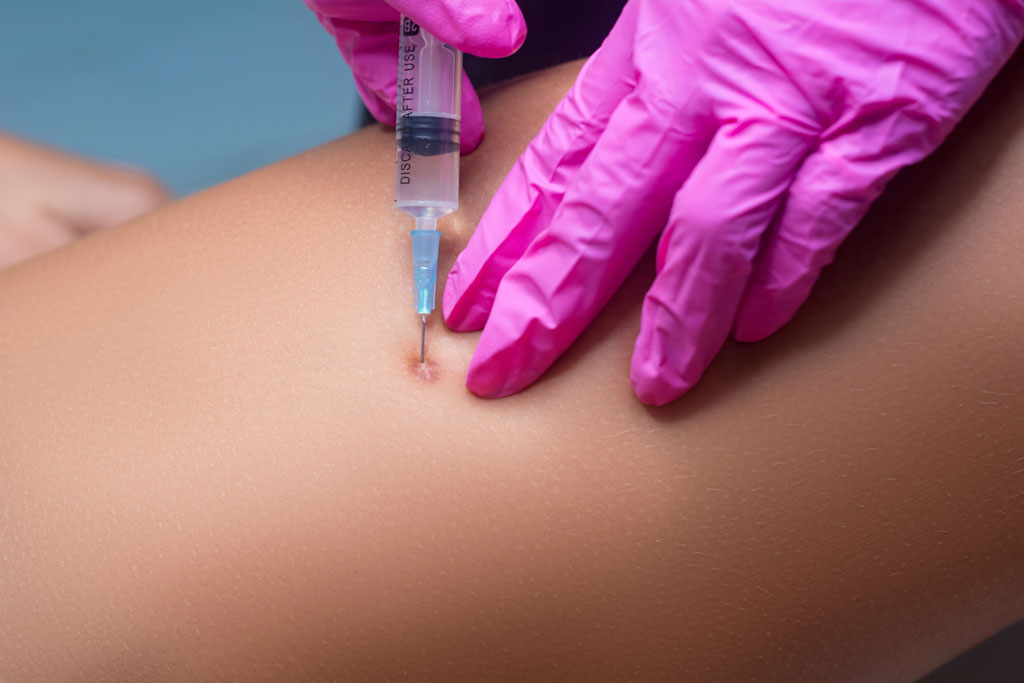
Steroid Injections
What does the procedure involve?
Steroids are often used as a treatment for smaller scars. However, in larger scars (or if injections are not effective), then a combination of surgical excision and steroid injections may be required.
The steroid is injected into the bulkiest part of the keloid scar at an angle. The needle will be inserted inside the scar tissue at tiny, spaced intervals to spread the steroid throughout the scar.
During treatment the scar tissue may temporarily look paler. It will sting and feel tense for a few seconds.
The injection needs to be repeated at intervals of 3 to 6 weeks for developing keloid scars (until it is stabilized), or monthly for 3 to 6 months on existing ones.

































































What are the risks and side effects?
Complications are infrequent and usually minor. However, no treatment is without risk, and it is important that you are aware of the possible complications. All the risks will be discussed in detail with you at your consultation.
Hypopigmentation / Hyperpigmentation
It is possible that the scar may become lighter or darker than the surrounding tissue. Hypopigmentation may be reversible with time (up to one year), but it could be permanent.
Skin/Fat atrophy
This occurs when scars become very thin and looks like a depression in the skin. This can occur following large amounts of steroids and/or injection in the surrounding normal tissue, which is likely to be permanent.
Cushing’s syndrome
This unlikely syndrome can develop if too much steroid is used but is very rare, given the small dose that is usually injected.
Pain on injection
Injections normally sting but can be improved with local anaesthetic or topical numbing creams. As the keloid scars soften, treatment becomes easier and less tender.
Recurrence
Steroid injections need to be repeated if there is any sign of recurrence.
What is the estimated time for recovery, absence from work and return to usual activities?
This is a minimally invasive procedure, and you can return to work and full activities on the same day.




